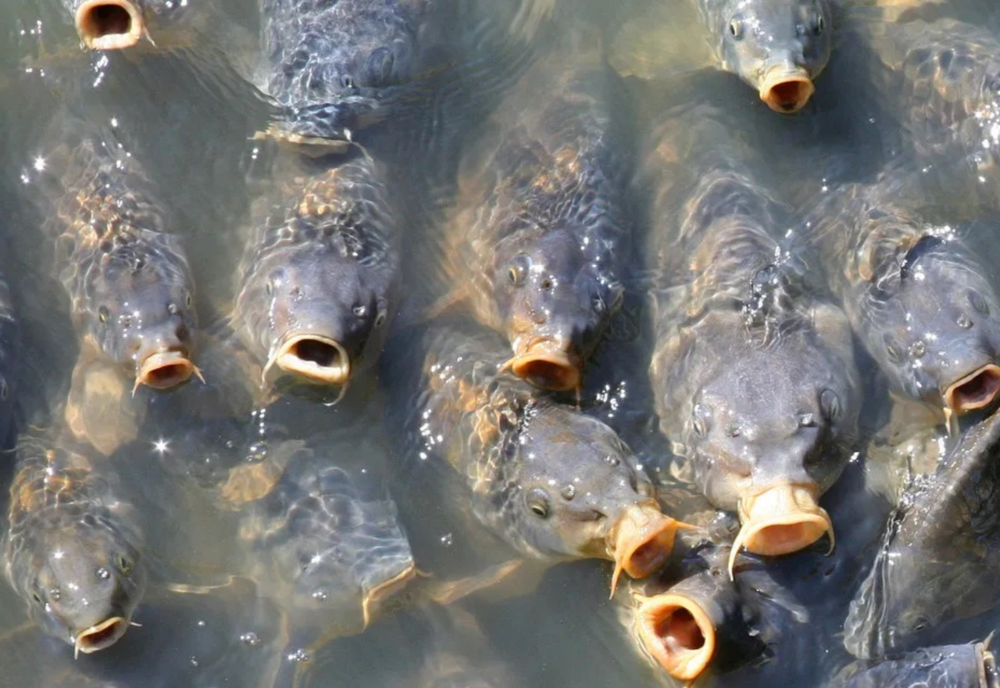'Jaw-dropping' mass carp spawning
Kristin Murdock
08 January 2023, 2:40 AM
 An earlier carp explosion in the Macquarie in March 2011 was captured by Carinda resident Cheryl Yow. IMAGE: ABC Rural
An earlier carp explosion in the Macquarie in March 2011 was captured by Carinda resident Cheryl Yow. IMAGE: ABC RuralIrrigators have posted confronting footage on Twitter of mass European carp spawning events across the Murray-Darling Basin with people reporting and recording sightings of thousands of 50 to 100 millimetre carp in even small bodies of water.
“The impact of carp on habitat and water quality is one of the greatest ecological threats to native fish recovery and healthy rivers in the Basin,” said NSW Irrigator's Council CEO, Claire Miller.
“The number of carp spawning is jaw-dropping. It looks like the water is bubbling.
“We call on the authorities to act promptly. Carp control is essential to avoid these floods leaving a lasting legacy of ecological degradation for years to come thanks to carp in plague proportions."
Ms Miller said the Australian Government needs to expediate the use of $15.2 million in funding that was announced six years ago. The aim of the funding was to investigate the feasibility of the Cyprinid herpesvirus 3 (carp virus) as a biological control agent for common carp to improve water quality in waterways across Australia.
"The funding was announced in 2016 and sat on a shelf since then. Carp control is an issue that won't go away," she said.
A video taken in a section of the Macquarie Valley downstream of Gin Gin was posted on Twitter by irrigator Matt Whittaker from Warren.
Spokesperson for the Barwon/ Darling Water Group, Ian Cole from Bourke said carp had been a massive issue in rivers for years, especially during flood events.
"From my memory, the first appearance of carp in the Bourke area was around the time of the 1974 and 1976 floods," Mr Cole said.
"We can definitely see an increase in carp around here at the moment, especially juveniles, and particularly in the floodwaters on the floodplain."
Scientists estimate 80 - 90 per cent of the biomass in Australian rivers is European carp.
"Natives just can't compete. Carp destroy habitat and damage the ecosystem," Mr Cole said.
Mr Cole agrees with Ms Miller that the government need to step up its carp "battle plan".
"They need to focus on other ways to clean them up, other than returning water to the river via irrigators. Fencing riparian zones is one idea," he says.

Everyone is familiar with the destruction potential of an increase in the number of carp in inland rivers. IMAGE: CSIRO via Shutterstock
The Irrigators' Council agrees the spawning event will put pressure on the Basin Ministerial Council to look past the simplistic "just add more water" approach when it considers the next steps on the Murray-Darling Basin Plan.
The carp spawning follows hypoxic blackwater events across the Basin, in which deoxygenated water from widespread flooding caused fish deaths.
“No amount of buybacks will fix the Basin’s biggest ecological threats, with rampant destructive feral species killing native species, wrecking their habitats and water quality,” said Ms Miller.
“If we are serious about looking after these important ecosystems, a health check would quickly reveal invasive species, degraded habitat and water quality should be the priorities for action."
In Australia, locations of carp spawning can be registered with FeralScan.




